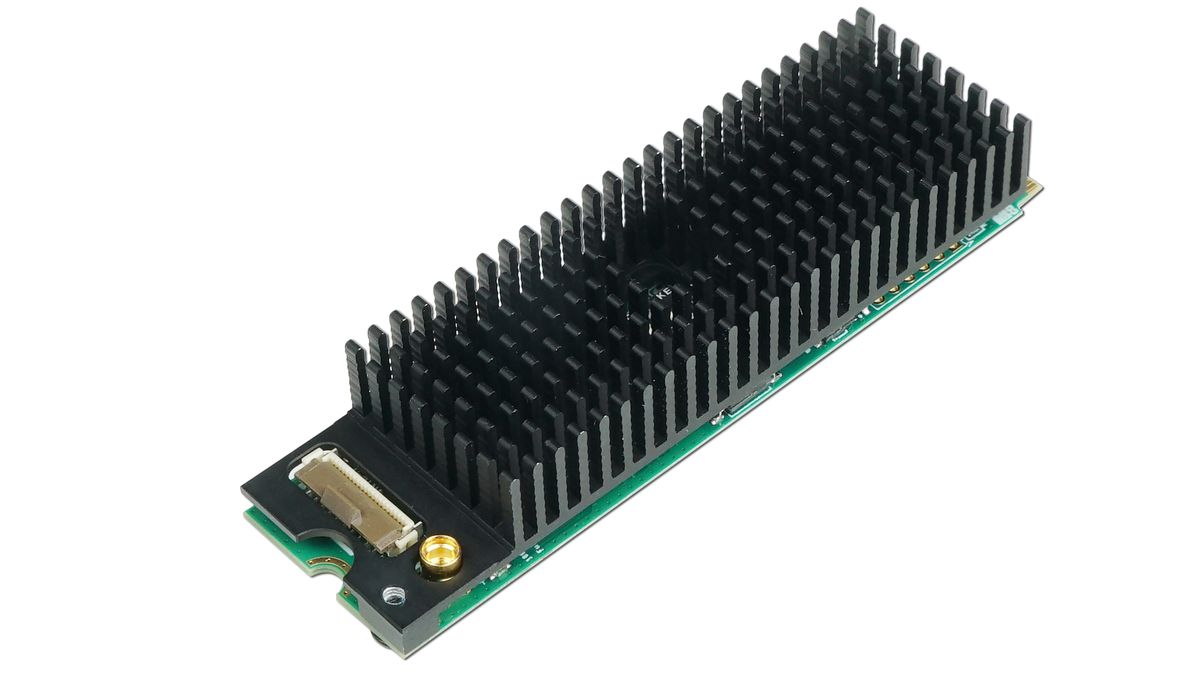Magewell has unveiled a new model in its Eco Capture family of ultra-compact, power-efficient, M.2 video capture cards. The new single-channel Eco Capture AIO M.2 provides both HDMI and SDI interfaces with embedded audio support for flexible input connectivity.
Magewell will highlight the Eco Capture AIO M.2 and other new innovations in booth C5031 at the 2023 NAB Show in Las Vegas from April 16-19.
[The Ghost in the HDMI Machine]
Magewell's Eco Capture cards offer systems integrators and OEM developers a high-performance video capture solution with low power consumption in a space-efficient form factor. The cost-effective, low-latency devices feature a high-speed PCIe 2.0 bus interface with an M.2 connector and measure just 22x80mm (0.87x3.15in), making them ideal for incorporation into small, portable or embedded systems where full-sized PCIe slots are not available.
The new Eco Capture AIO M.2 can capture one channel of video up to 2048x1080 at 60 frames per second over either its HDMI input or its 3G-SDI interface, with up to eight channels of embedded audio. The SDI interface's BNC connection can also be configured to accept a standard-definition composite analog video signal for compatibility with legacy source equipment.
[NAB Show Expects Big Gains in 2023]
The new offering joins five existing Eco Capture M.2 cards including single-input (HDMI or SDI) 4K models; dual-channel models that capture HD and 2K video over HDMI or SDI; and a quad-channel HD/2K model with SDI inputs.
"Our Eco Capture family continues to be extremely popular for enabling robust, reliable video capture in space-constrained applications," said James Liu, vice president of engineering at Magewell. "We expect the new Eco Capture AIO M.2 to be particularly interesting to OEM partners and third-party solution developers who need a compact, power-efficient capture card and want to offer their end-customers a flexible choice of input connectivity."
[Deadline for NAB Show Excellence in Sustainability Awards Entries Is April 3]
Eco Capture cards are compatible with Windows and Linux operating systems and support OS-native APIs including DirectShow, DirectKS, V4L2 and ALSA. FPGA-based video processing provides high-quality up/down/cross-scaling, picture controls, and color space conversion without tasking the host system CPU. A comprehensive SDK is also available, enabling developers to directly access the full feature set of the cards.










